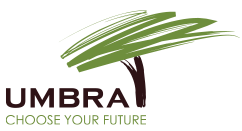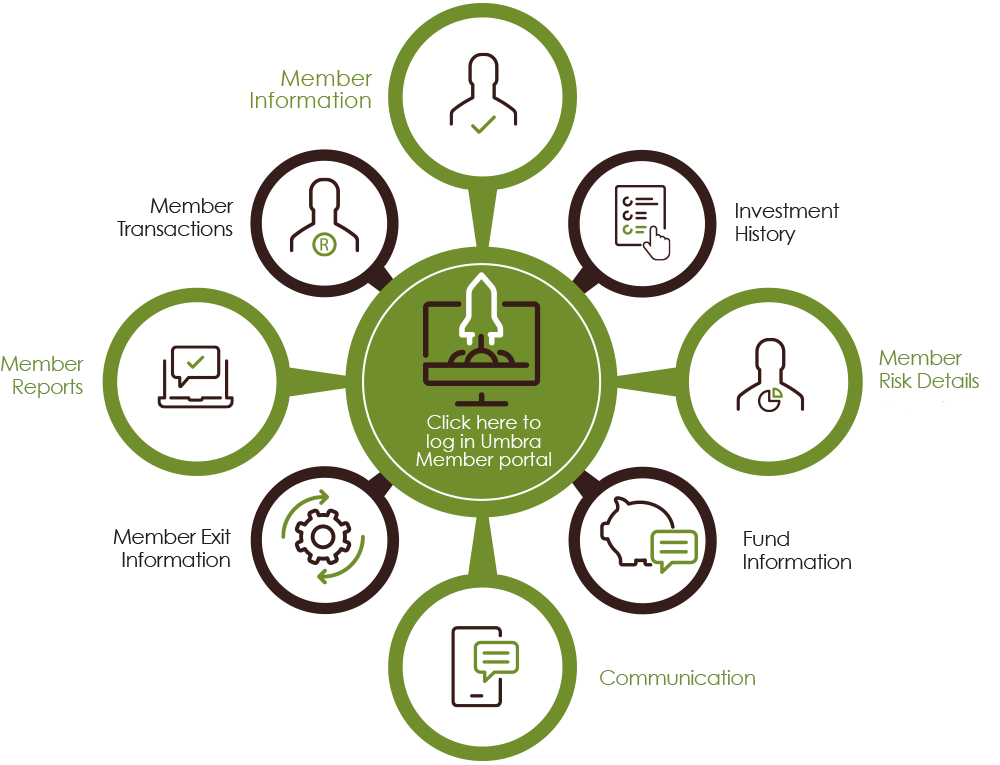Retirement Annuity Funds are similar to pension funds, however the member can
never access their retirement monies, until the reach early retirement age, which is
age 55 (in terms of the Income Tax Act). Therefore, you will not be able to access your
monies when you resign, you are dismissed or retrenched. A retirement annuity is a
particularly useful tool to plan your retirement so speak to a financial advisor for more
information or contact us if you would like to know more about Group Retirement
Annuities.
A pension fund and provident fund are occupational retirement funds, provided by
an Employer, and therefore membership is compulsory. The difference between the
two funds are at retirement.
Pension Fund: When you retire, you can access 1/3 in cash and 2/3rds must be used
to buy you an income (also called an annuity) for old age.
Provident Fund: When you retire, you can access the full amount in cash. However,
please note that any portion taken in cash will be taxed.
A pension or provident fund allows you as a member of an Umbrella Fund to save a portion of monthly salary. This retirement monies will one day help you when you retire and stop working. The money you receive after retirement is called a pension and you need to speak to a registered financial advisor to guide you in the retirement process.
You should always aim to save enough to replace your working salary with a pension
which covers a 100% of your salary received before you retired. 50% o 70% is seen a
good pension replacement and anything upwards of 70% is seen as a great pension.
If we take the above evidence, and I earned a salary of R10 000, the best solution
would be to receive R10 000 after retirement, however a good pension would be
R5 000 to R7 000 and a great would be an monthly amount above the R7 000.
Therefore, if you earned R10 000 before retirement and you retire with a 70%
replacement, you will receive R7 000 after retirement.
The amount you earn after retirement is dependent on your standard of living and
how you spend money. Please speak to a registered financial advisor to assist you
when you decide to retire.
When you contribute towards retirement, your annual income tax is lower due to
saving for retirement.
Currently, your contribution is tax deductible up to 27.5% of remuneration, which is
then subject to a maximum amount of R350 000 per year.
Some tips to make sure you retire comfortably:
If you want to contribute more towards your retirement, you can do it in the following ways:
If you would like to exercise any of the above options, please get in touch with your HR or Payroll Department to understand the requirements.
As a member of the Umbra Umbrella Arrangement, you will see the following fees paid:
Administration Fee | Investment Fee
You will either pay a flat administration fee, a combination of an administration and
investment fee or just a clean administration fee. This is dependent on the size of your
Fund, both in terms of membership and the size of assets.
Governance Fee
The Umbra Umbrella Arrangement makes provision for a governance fee, which is
used to ensure that the expenses on the Fund are paid and covered. This fee is
included in the above administration | investment fee, and is shown as a separate
line item under costs. This fee is used to enhance our systems and communication to
our members, including covering costs to the Regulator, being the Financial Sector
Conduct Authority (FSCA).
Consulting Fee
Your Employer requires guidance in terms of making important decisions on your
employee benefit structure at work and how to improve the outcomes for the staff in
terms of contributing as much as possible towards retirement savings. This is where the
appointed benefit consultant comes into play and this appointed service provider
would assist the Employer to make these important decisions and how to implement
them.
The consulting fee is deducted from the contributions paid by the Employer. It is an
expense deducted against the Employer contribution portion. The fee is calculated in
terms of the agreed ASISA fee scale, which is illustrated below:
ASISA Scale (VAT Excluded)
R0 – R200 000
R200 001 – R300 000
R300 001 – R600 000
R600 001 – R2 000 000
R2 000 001 upwards
Risk Benefit Fee
You also pay a risk benefit fee for the risk benefits you enjoy under the Fund. Get in
touch with your benefit consultant who can advise you on the cost of these benefits
and what cover you enjoy. Ensure that you complete a nomination of beneficiary
form, for your risk benefits and retirement monies when you pass away.
All your Fund information is available on the Umbra Web Portal.
You can also get in touch with the benefit consultant can assist you with this information.
Retirement Monies
Employer Contribution
Member Contribution
Consulting Fee
Administration Fee
Risk Premiums (Insurance Benefits)
Transfer in from other Retirement Funds
Net Investment Return
As a member of the Umbra Umbrella Arrangement, you are able to make use of the
Umbra Web Portal here (Include Web Portal details). By using this Web-Portal, you are
able to access all information regarding your retirement benefits.
You are encouraged to make use of the Web-Portal, as it allows you to upload your
details and you can access your benefit statement and new member certificate
directly from the Portal. Please look at your Member Booklet, which explains what you
can do and how to access the Portal.
Please get in touch with your HR or Payroll Department who would also have access
to the Umbra Web-Portal. Your Employer will be able to assist you with a benefit statement.
If you still experience any issues, please visit our website www.umbra.co.za for the contact details of all our staff who will be able to assist. Otherwise please click here to
go to our contact form.
You can reach Umbra on our website www.umbra.co.za, or click on the contact form
to get in touch, and we will assist you.
We provide a Fund Councillor and Financial Advisors to assist you.
Below is a summary of what you as a member of the Umbra Umbrella Arrangement
can expect:
Retirement Funds need to provide benefit counselling to all members on the Fund. The
benefit counselling provides factual information, that is clear and understandable by
members of the Fund, in terms of the options when a member withdraws or retires from
the Umbra Funds.
The benefit counselling includes clear disclosure of all fees charged and the
consequences of options being considered. Your governance fee makes provision for
this counselling and we encourage all members to make use of this benefit, from an
independently contracted benefit counselling provider.
The benefit counselling does not constitute any advice and is rather another
communication tool for the Fund to guide, educate and empower our members to
make more informed decisions, which will lead to better outcomes in the future. If you
require financial advice or additional advice over and above the benefit counselling
provided, please also get in touch.
Your retirement savings will be distributed in terms of Section 37C of the Pension Funds
Act, which provides the Trustees with guidance on the distribution of a death benefit.
The Trustees in terms of Section 37C would ensure that dependent beneficiaries are
not left destitute after the death of the main member. The following three guidelines
can be followed in terms of Section 37C:
In terms of the Regulations to the Act, when a member changes Employers, their retirement savings become paid-up, and you are allowed to choose any of the options below:
Option
Remain what is called a paid-up (deferred) member
Transfer to an approved Preservation Fund
(Option available in-house)
Transfer to a Retirement Annuity
Transfer to your new Employer
Part Cash, and part transfer
Access full benefit in cash
If you take any amount in cash, as mentioned, the following tax tables are used:
Withdrawal Tax Table:
Taxable Income (R)
0 – 25 000
25 001 – 660 000
660 001 – 990 000
990 001 and above
Retirement Tax Table:
Taxable Income (R)
Rate of Tax (R)
0 – 500 000
500 001 – 700 000
700 001 – 1 050 000
1 050 001 and above
When you reach retirement age, you are provided with the following options:
When you are not ready to retire, but you are no longer employed:
If you would like to take retirement, you could buy a pension (annuity):
Pension | Annuity Option
Information
Living Annuity
Allows you to invest your retirement
savings in investment portfolios, and you
choose the level of income you require
monthly. You can draw an income
between 2.5% and 17.5% of your
retirement savings and is taxed in the
same way your salary was taxed.
Choosing the rate of income, you get
monthly is called the drawdown rate.
You can change the investment
portfolios you invest in annually and the
drawdown rate previously picked,
subject to the regulatory limits. If you
deplete your retirement savings drawing
down an income, then no further
income will be available under the living
annuity option. You can also leave the
retirement savings for your beneficiaries.
Life Annuity
When buying a Life Annuity, you give
your retirement savings to an insurance
provider, who commits to making a
monthly payment of income to you for
as long as you are alive.
You can leave the retirement savings to
your spouse (buy this option onto the
annuity), however you cannot leave this
money to your beneficiaries.
Hybrid Annuity
This option combines the flexibility of a
living annuity with the security provided
under a life annuity, and this is provided
as consolidated income.
It allows you to invest a portion of your
retirement savings into a living annuity
and draw down an income when
required, while the other portion is used
to buy a life annuity (inside of the living
annuity option).
The hybrid annuity enables you to reap
the benefits of both types of annuities,
and to manage the short-comings of
each.
Your Employer must issue you as an employee of the company with an IRP5/IT3(a) certificate where remuneration is paid or has become payable to you. The IRP5/IT3(a) discloses the total employment remuneration earned for the year of assessment and total deductions.
Certificates are only issued for the full year 1 March to 28/29 February.

